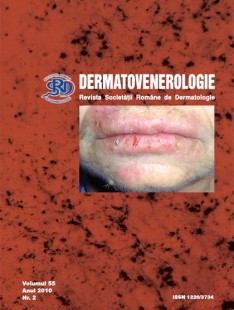Clinical trials and experimental
Morphological and immunohistochemical particularities of primary cutaneous B-cell lymphoma – diagnostic algorithm
Introduction:
Primary cutaneous B-cell lymphomas (CBCL) represent a unique group of extra-nodal lymphomas, ranging between 20% and 25% among primary cutaneous lymphomas. The WHO-EORTC classification for cutaneous lymphomas, published in 2005, includes three main entities of primary cutaneous B-cell lymphomas (CBCL): primary cutaneous B-cell lymphoma with marginal zone (pcMZL), primary cutaneous follicle centre lymphoma (pcFCL) and diffuse primary cutaneous large B-cell lymphoma, leg type (pcDLBCL).
Aim:
To review the histological and phenol-typical features of the main entities of CBCL and to provide a diagnostic guideline for pathologists and dermatopathologists.
Materials and methods:
Histological review was performed on hematoxylin-eosin and immunohistochemical stained sections from CBCL cases retrieved from the files of the Pathology Department of the University of Frankfurt/Main, Germany, over a period of 3 years.
Results:
Histological, pcMZL is characterized by a nodular or diffuse infiltrate composed of small to mediumsize lymphoid cells with indented nuclei and an abundant pale cytoplasma. They are immunohistochemical CD19+, CD20+, CD79a+, CD5-, CD10-, bcl-6- and bcl-2+. PcFCL is histological characterized by a nodular or diffuse infiltrate represented by a relatively mono-morph cellular admixture of centrocytes and centre-blasts. The tumor cells express CD19, CD20, CD79a, bcl-6 and variably CD10 by negativity for bcl-2. The microscopic aspect of PcDLBCL is a dense diffuse infiltrate, composed of centre-blasts and/or immune-blasts with large nuclei, prominent nucleoli and a high mitotic activity. Immune-phenotype, the infiltrate is CD20+, CD79a+, bcl-6+, bcl-2+, MUM1+, CD5- and CD10-.
Conclusion:
PcBCL are a heterogeneous group of Bcell lymphomas whose precise classification can be achieved only after a complete synthesis of clinical, histopathological and immune-phenotype features.


